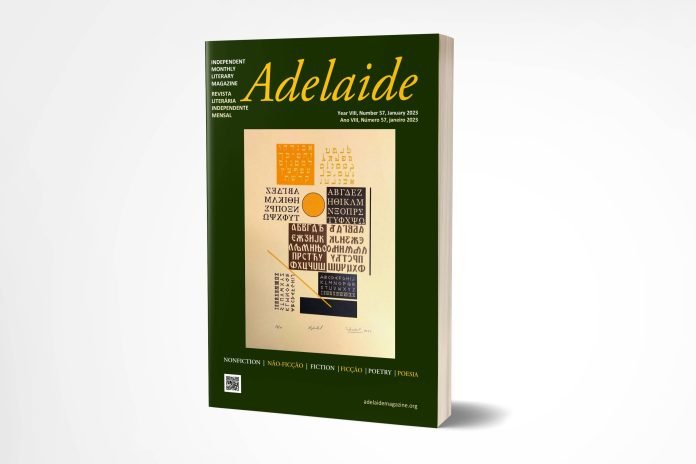TITLE: Human in Trees, Trees in Human
What I like about native trees, sometimes, are the names themselves. Customarily, the names of places are derived from the indigenous trees that are locally found. Long before territories or jurisdictions were established, native trees flourished in landscapes, and people associated the place with the tree of their interest. A place called Tabon-tabon may be derived from the tree Tabon-tabon (Atuna racemosa) or Barugo from the climber Balugo (Entada phaseoloides). With the same premise, would it also imply using scientific names in naming places, such as Kananga from Cananga odorata (Ilang-ilang)? Significantly, Kananga, Leyte is where our foremost plant taxonomist, Dr. Leonardo Co, was killed.
As man arbitrarily assigns names, some parts of the plant resemble that of the human. Similarities in Waray lexicon (also common throughout the Philippines), words are repeated as they are called to the associated. Naming Muyong-buyong to Voacanga globosa would mean that there is something in the tree that looks like “buyong” (testicles). This association differs from the common simile using mala- just like malabuhok, to conjoin two different entities.
I grew up in San Jose, Dulag, Leyte, part of the Daguitan-Marabong Watershed. I have many memories of native trees flourishing on our beaches, riverbanks, mountains, and rice fields. I am familiar with some, as our local folks call them by their common names. Asking about the origin, three of them caught my attention: Ulo-ulo, Kele-Kele, Mako-pako.
Family: Araliaceae
Scientific name: Osmoxylon eminens
Local Name: Ulo-ulo
I have been familiar with Ulo-ulo (Osmoxylon eminent) since childhood as it grows near bodies of water, typically an understory for tall tree canopies. It has a slender trunk contending sunbeam with other undergrowth that even wildlings thrive in full shade and moist areas. It is distinct from the rest, as it possesses attractive bright yellow to orange inflorescence attached to its dark fruit aggregates. The vibrant flowers are like cotton buds crammed with small globules enticing a congregation of insects such as bees, wasps, and beetles. The actual flower is at the tip of each “cotton-buds” connected to the berries. The decoy seems to be inflorescence making up inflorescences! Collectively, typifying a human head settled at the apex would surely be why it’s called Ulo-ulo or like a head. As the fruit ripens, birds and bats flock to feast on its whitish pulp containing tiny seeds in accumulations. Since childhood, I wondered if the fruit tasted sweet but never had I attempted to.
The leaves are also stunning, with broad, palmately compounds ranging from seven to thirteen fingers typifying that of papaya leaves. I often saw birds taking refuge on its broad leaves when the rain pours or even just a quick relaxation from a flight. But despite its beauty, one must be careful in contact since it causes itchiness that even carabaos are aloof with it. The leaves usually drive away stray animals pestering plants and petrifying naughty kids. Twice I was whipped by my playmate, which left delayed itchiness and red marks. The fruit juice of lemonsito or calamansi is an effective treatment for irritation.
Because of its beauty, Ulo-ulo is used as decoration during special occasions. I could still remember the “kangga” or carabao cart in the ’80s decorated with Ulo-ulo during the grand parade of Santa Cruzan and Flores de Mayo together with the pageantry of the Reynas. Among the characters enjoined in the precession, only one character regarded my interest- Methuselah, the Oldest of the Old. Methuselah is a Biblical character in the Book of Genesis who is considered the oldest man on Earth, living at 969! He was portrayed in the procession riding a “kanga” adorned by the flowers of Ulo-ulo, coconut, and Anahaw leaves. This imagery is glued in my memory as we, elementary classmates, follow the “kanga” awe-stricken with the oldest man on Earth, dressed like a hermit with long white hair and a beard. Whoever the artistic creator of that imagery (that I wasn’t able to know), indeed, it is so fit to use Ulo-ulo in the array of the Oldest Man in the Old Testament. This scene, too, is a familiar flower offering during Todos Los Santos. The inflorescence is mounted in a banana trunk and laid in the tomb of departed loved ones. It is so dignified for a soul to be offered with Ulo-ulo blossoms that only a loving heart can manage to cut a tree and be inflicted with irritations to obtain the flower and make it as an offering.
But today, I had never seen Ulo-ulo being used as a decoration in any celebration. Our Santa Cruzan, Flores de Mayo, and Todos Los Santos are adorned with promoted commercial and fancy flowers. Even Methuselah is not part of the Grand Santa Cruzan anymore. Long were the days when the Oldest of Old mystified with the Reynas. Long were the days when souls were being offered with the ornate. It could be beneficial for the conservation of this species. Maybe it could be best to leave it renounced. But there is only one thing for sure, Ulo-ulo was part of Waray celebrations, and it is being tendered to the Oldest and the Loved. Indeed, so appropriate to be called- like the head.
Family: Annonaceae
Scientific name: Drepananthus acuminatus
Local Name: Kele-kele, Ngele-kele
Kele-Kele or Ngele-Kele (Drepananthus acuminatus) has a straight bole used for house construction and furniture known for its hard timbre. What attracts me is the folded leaves that flap as the wind blows on its canopy like birds’ wings. They were like fleet flapping, producing very soothing music. Until now, I would stand by under the tree, wait for the wind to blow, and hear the same tranquil melody. Locals folks call this Kele-kele, referring to the dark trunk and timbre it has. I asked an older man if the scent was foul, referring to a foul-smelling armpit, but it was on the contrary! It has a woody aroma so distinct from this tree that I can’t relate with any.
Family: Sterculiaceae
Scientific name: Pterygota horsfieldii
Local Name: Mako-pako
Pterygota horsfieldii was not identified by our folks. But when I showed the fruit containing winged seeds, they called it Mako-pako (referring to pako or wings). Encountering this tree was heartbreaking when DPWH started the road widening in Labiranan Mountains, where this tree stands. I asked some construction workers if they could spare it since it was not impeding the parameters. They looked at me, and one responded that it depended upon their boss. I left the site hoping for good that they would leave the tree unharmed. It was already uprooted upon return two weeks later. Painful as it is, I collected some leaves, flowers, and fruits for the identification that even in death, the tree will be given a name. I posted it on the PNTE Facebook page for practitioners to identify. I even tried to germinate some of the seeds with Maam Maria Dayan’s guidance but was unsuccessful. Sadly, the seeds were too young and may be impossible to grow. Whenever I pass this area, I would look at the same spot where this tree stands in memoriam.
I sometimes ask, why do I love trees? Is it for Science or arts? Is it an extension of myself? But loving trees would summon our heads, armpits, and heart. It requires knowledge, armpits’ toil, and heartbreak episodes. Indeed, we see nature as human; that’s why we name them after us.
Bryan Joseph Matillano is a lecturer on environmental biology with a passion for indigenous trees.



















